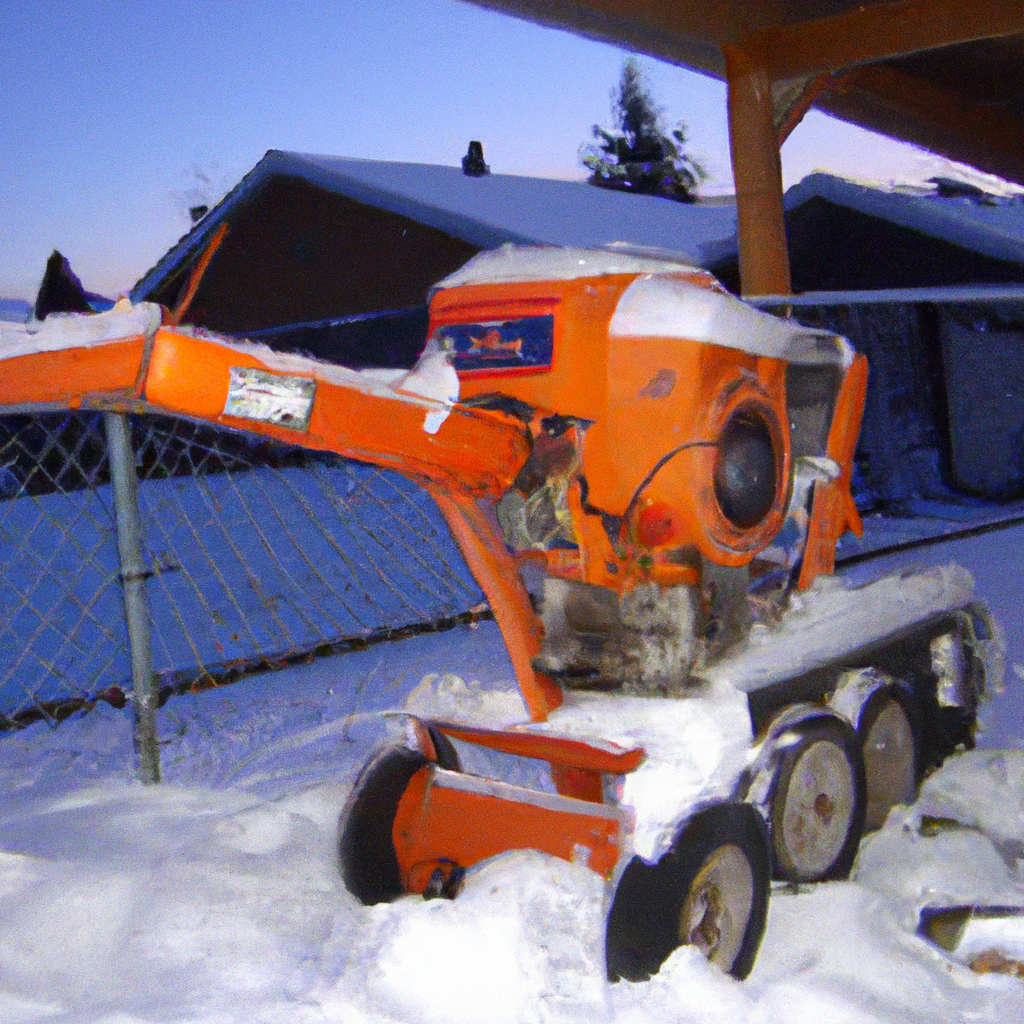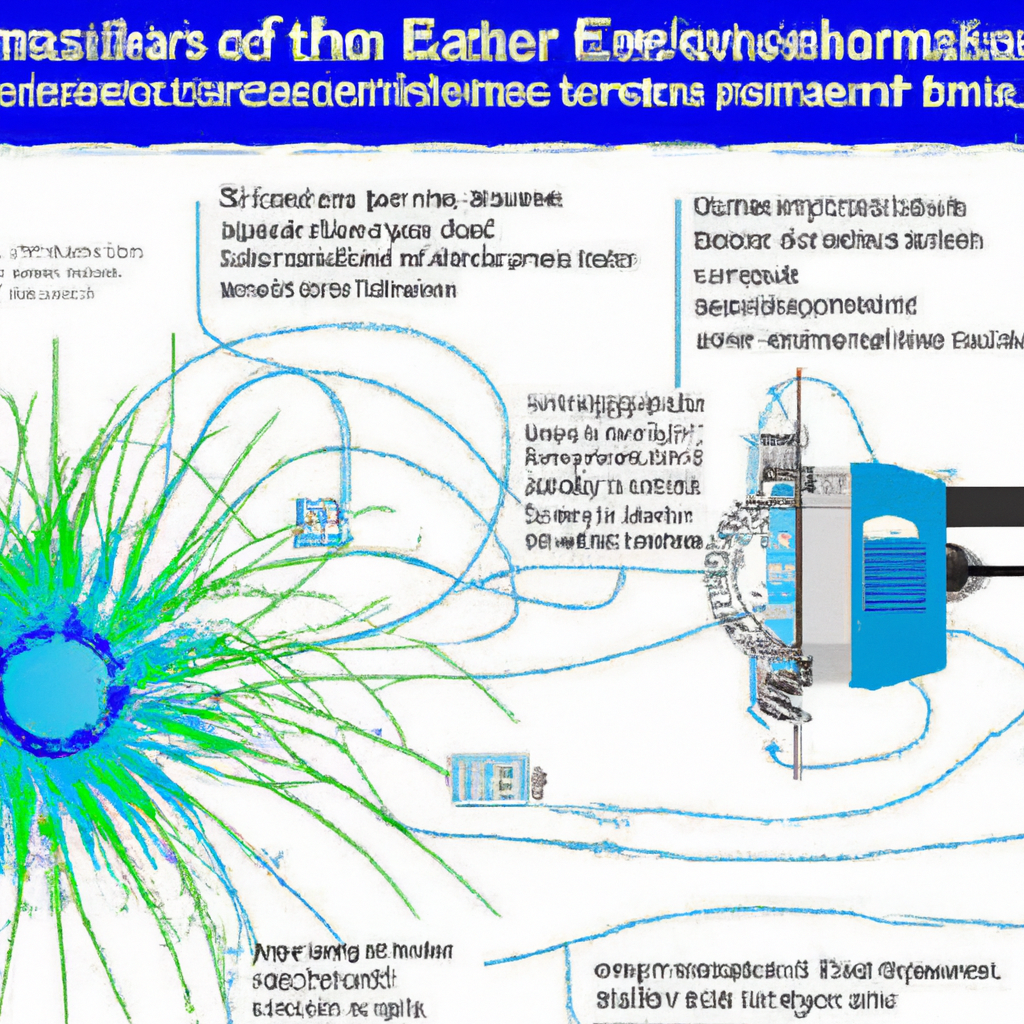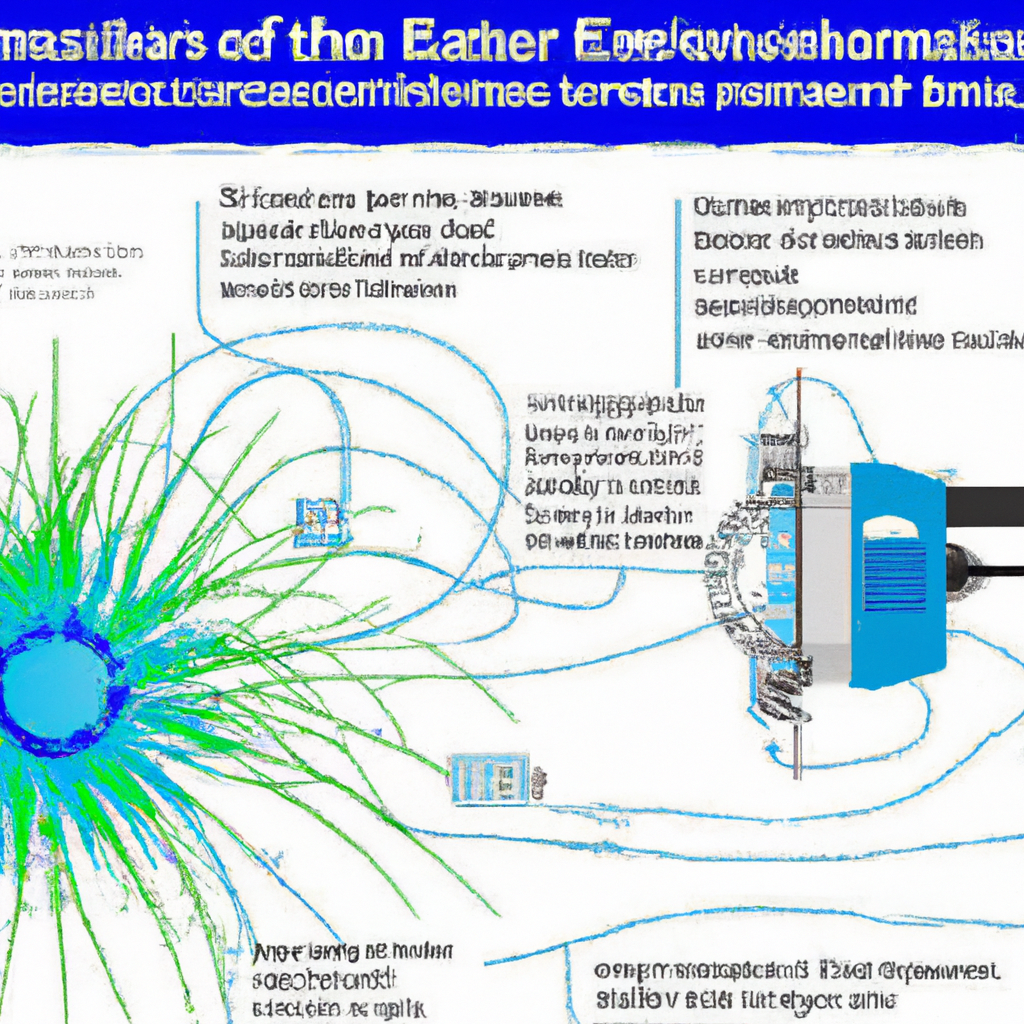We're an affiliate
We hope you love the products we recommend! Just so you know, we may collect a share of sales or other compensation from the links on this page. Thank you if you use our links, we really appreciate it!
If you’ve ever wondered how an electric snow blower works, this article will give you the answers you’re looking for. By breaking down the inner mechanism of these machines, you’ll gain a better understanding of how they efficiently clear away snow and make your winter chores much easier to handle. So let’s dive right in and explore the fascinating world of electric snow blowers!
Understanding the Mechanism of an Electric Snow Blower
Overview of Electric Snow Blowers
Electric snow blowers, also known as snow throwers, are machines designed to remove snow from driveways, sidewalks, and other surfaces. They provide a convenient and efficient way to clear snow without the physical effort required by manual snow removal methods. Electric snow blowers are powered by electricity, either through a cord connected to an outlet or by a rechargeable battery.
Components of an Electric Snow Blower
Electric snow blowers consist of several key components that work together to effectively remove snow. These components include an electric motor, impeller, auger, chute, power source, and various safety features.
Working Principles of an Electric Snow Blower
Electric snow blowers operate by collecting snow and then discharging it away from the cleared area. The process involves the use of an electric motor to power the impeller and auger, which work together to gather and throw the snow using the chute.
Electric Motor
The electric motor is the heart of an electric snow blower. It provides the power needed to operate the machine. The motor is responsible for driving the impeller and auger, and it determines the speed and effectiveness of the snow clearing process.
Impeller
The impeller is a fan-like component located at the back of the snow blower. It is directly driven by the electric motor and plays a crucial role in throwing the snow. As the impeller spins, it creates a strong airflow that propels the collected snow out of the machine and into the discharge chute.
Auger
The auger is a rotating spiral blade located at the front of the snow blower. It is connected to the electric motor and works in tandem with the impeller. The auger collects the snow and breaks it up, allowing the impeller to throw it out of the chute.
Chute
The chute is a long, curved tube that directs the discharged snow in a desired direction. It can be manually adjusted to control the angle and distance at which the snow is thrown. Some snow blowers may also have a deflector attached to the chute, allowing further adjustment of the snow throwing trajectory.
Power Source
Electric snow blowers can be powered either by an electric cord connected to an outlet or by a rechargeable battery. Corded snow blowers provide unlimited runtime as long as they are connected to a power source, while battery-powered snow blowers offer more mobility and freedom of movement without the need for a power cord.
Safety Features
Electric snow blowers are equipped with various safety features to ensure safe operation. These may include emergency stop buttons, safety switches, automatic shutoff mechanisms, and guards to prevent accidental contact with moving parts. It is important to familiarize yourself with these safety features and always follow the manufacturer’s instructions to avoid accidents.
Maintenance and Care
To keep your electric snow blower in optimal condition and prolong its lifespan, regular maintenance and care are essential. This includes cleaning and storage, inspecting and replacing blades/belts, lubricating moving parts, and performing electrical maintenance. Following the manufacturer’s guidelines for maintenance will help ensure the longevity and performance of your snow blower.
Overview of Electric Snow Blowers
Definition of an Electric Snow Blower
An electric snow blower is a machine that uses an electric motor to remove snow from various surfaces. It provides a convenient and efficient alternative to manual snow removal methods, reducing physical effort and increasing productivity.
Advantages and Disadvantages
Electric snow blowers offer several advantages over their gas-powered counterparts. They are generally quieter, produce no emissions, are easier to start and maintain, and require less physical effort. However, they may have limited runtime compared to gas snow blowers and may be less powerful for heavy snow clearing tasks.
Different Types of Electric Snow Blowers
There are two main types of electric snow blowers: corded and battery-powered. Corded snow blowers rely on a power cord connected to an outlet to operate, while Battery-powered snow blowers utilize rechargeable batteries. Each type has its own advantages and considerations, depending on the user’s needs and preferences.

Components of an Electric Snow Blower
Electric Motor
The electric motor is an integral part of an electric snow blower. It converts electrical energy into mechanical energy, which drives the impeller and auger to remove snow. The power and efficiency of the motor determine the performance of the snow blower, making it a crucial component.
Impeller
The impeller is a fan-like component connected to the electric motor. It creates a high-velocity airflow that propels the collected snow out of the machine. The design and size of the impeller influence the throwing distance and quality of the snow discharge.
Auger
The auger is a rotating spiral blade located at the front of the snow blower. It turns at a high speed and collects the snow, breaking it up into smaller pieces. The auger works in conjunction with the impeller to facilitate snow clearing and discharge.
Chute
The chute is responsible for directing the discharged snow away from the cleared area. It is a curved tube that can be manually adjusted to control the throwing angle and distance. Some snow blowers may have a deflector attached to the chute, allowing for further adjustment of the snow trajectory.
Power Source
The power source of an electric snow blower determines its portability and runtime. Corded snow blowers rely on a power cord connected to an electrical outlet, providing continuous power as long as the cord is connected. Battery-powered snow blowers, on the other hand, offer increased mobility as they operate on rechargeable batteries, allowing users to move freely without the restriction of a power cord.
Safety Features
Electric snow blowers are equipped with various safety features to ensure safe operation. These features may include emergency stop buttons, safety switches, automatic shutoff mechanisms, and guards to prevent accidental contact with moving parts. It is crucial to understand and utilize these safety features to prevent accidents during snow clearing.
Working Principles of an Electric Snow Blower
Snow Collection
When an electric snow blower is in operation, the auger rotates rapidly and collects the snow from the surface being cleared. The spiral blades of the auger break up the snow, allowing it to be picked up and lifted by the impeller.
Snow Discharge
Once the snow is collected by the auger, it is propelled towards the impeller by the rotating motion. The impeller, driven by the electric motor, creates a high-velocity airflow that pushes the snow through the discharge chute. The user can adjust the chute and, if applicable, the deflector to control the throwing direction and distance of the discharged snow.

Electric Motor
Function
The electric motor is responsible for providing the power needed to operate the electric snow blower. It converts electrical energy from the power source into mechanical energy, which drives the impeller and auger. The motor’s speed and power determine the performance and effectiveness of the snow clearing process.
Types of Electric Motors Used
Electric snow blowers commonly use induction motors or brushless DC (BLDC) motors. Induction motors are reliable and efficient, while BLDC motors offer higher power density and increased control over motor speed. The type of motor used may vary depending on the specific design and model of the snow blower.
Power Requirements
The power requirements of an electric snow blower depend on its motor’s power rating. Higher power ratings generally result in better performance and increased snow clearing capabilities. It is important to consider the power requirements and choose a snow blower that matches the intended use and snow clearing demands.
Impeller
Role of the Impeller
The impeller is a vital component of an electric snow blower. Its primary role is to create a high-velocity airflow that throws the collected snow out of the machine. The impeller is directly connected to the electric motor, which drives its rotation.
Types of Impellers
Electric snow blowers typically utilize either a single-stage or a two-stage impeller system. Single-stage impellers are more common in smaller snow blowers and are designed to both collect and discharge the snow. Two-stage impellers are found in larger and more powerful snow blowers and have separate components for snow collection and discharge, increasing their throwing distance and efficiency.
Auger
Purpose of the Auger
The auger plays a crucial role in an electric snow blower as it collects and breaks up the snow for efficient discharge. The rotating spiral blades of the auger break down the snow, allowing it to be lifted by the impeller and thrown through the chute.
Types of Augers
There are different types of augers used in electric snow blowers, including standard steel augers and rubber augers. Standard steel augers are durable and effective in breaking up compacted snow, while rubber augers are more suitable for lighter snowfall and are less likely to damage surfaces such as wooden decks or gravel pathways.
Chute
Function of the Chute
The chute is responsible for directing the discharged snow in a desired direction. It is a curved tube attached to the snow blower and can be adjusted manually to control the angle and distance at which the snow is thrown. The chute allows for efficient snow distribution and clearing.
Types of Chutes
There are generally two types of chutes used in electric snow blowers: manual and powered chutes. Manual chutes require user intervention to adjust the throwing direction and angle. Powered chutes, found in more advanced snow blower models, can be controlled remotely to adjust the discharge direction and angle, providing greater convenience and ease of use.
Power Source
Electric Corded Snow Blowers
Electric corded snow blowers are powered by electricity supplied through a power cord connected to an electrical outlet. They provide continuous power as long as they are plugged in, allowing for uninterrupted snow clearing. However, the cord can restrict mobility and may require the use of extension cords to reach the desired clearing area.
Battery-Powered Snow Blowers
Battery-powered snow blowers utilize rechargeable batteries as their power source. They offer increased mobility and freedom of movement compared to corded snow blowers. However, the runtime of battery-powered snow blowers is dependent on the battery’s capacity and may require recharging during longer snow clearing sessions.
Maintenance and Care
Cleaning and Storage
Regular cleaning and proper storage are important for maintaining the performance and longevity of an electric snow blower. After each use, remove any snow residue and debris from the machine, paying close attention to the impeller, auger, chute, and other moving parts. Store the snow blower in a dry, sheltered area to prevent rust and damage.
Blade/Belt Inspection and Replacement
Inspect the blades and belts of the snow blower regularly for any signs of wear or damage. Replace any worn or damaged blades or belts promptly to ensure optimal performance. Follow the manufacturer’s guidelines for replacement parts and installation.
Lubrication
Certain moving parts of an electric snow blower may require lubrication to reduce friction and ensure smooth operation. Refer to the manufacturer’s instructions for the appropriate lubricants and recommended lubrication intervals.
Electrical Maintenance
Check the electrical components of the snow blower periodically for any signs of damage or loose connections. Ensure that all safety features are functioning properly. If any electrical issues arise, consult a qualified technician for repairs.
By understanding the mechanism and components of an electric snow blower, you can make an informed decision when choosing the right machine for your snow clearing needs. Remember to follow proper maintenance and care practices to keep your snow blower in excellent condition and ensure efficient snow removal season after season. Stay safe and enjoy the convenience of an electric snow blower in tackling winter’s snowy challenges!

